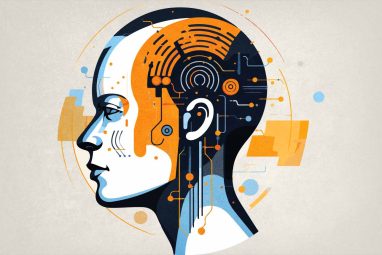There’s a Rapid Growth in Large Language Model Market, But Hurdles Persist
Several challenges potentially limit the market’s expansion, including the development cost.
Topics
News
- Core42 and Qualcomm Launch Compass 2.0 to Boost AI Efficiency and Accessibility
- Data Debt Emerges as Core Business Issue for Enterprises
- Are Organizations Investing in AI Achieving Positive ROI?
- Are Increasing Breaches Due to the Cyber Skills Gap?
- What Are the Challenges Firms in the UAE and Saudi Arabia Face in GenAI Implementation?
- Enterprises See the Promise of Generative AI But Lack the Guardrails to Mitigate Operational Risks

[Image source: Krishna Prasad/MITSMR Middle East]
The frontiers of AI have never advanced more rapidly than they are now. The large language models (LLMs), driven by machine learning and neural network technology, enable everything from sophisticated search tools to better customer service. With their ability to comprehend and generate human-like text, these models are becoming indispensable in automating repetitive tasks and enhancing user experiences across digital platforms.
Although the LLM market is proliferating due to its increasing importance across various industries such as finance, healthcare, and e-commerce, future developments in natural language comprehension, multimodal integration, and greater industry integration will further drive the market.
The LLM market is projected to surge from $6.4 billion in 2024 to $36.1 billion by 2030, at a CAGR of 33.2% during the forecast period of 2024–2030, according to a new report by MarketsandMarkets.
The growing imperative for improved communication between humans and machines, the escalating demand for automated content creation and curation, and the increasing accessibility of extensive datasets are driving the market forward.
Adaptability to Different Tasks
General-purpose LLMs versatility enables applications across various industries, from customer service chatbots to content generation in marketing. Their adaptability to tasks without significant retraining makes them highly attractive to businesses seeking cost-effective solutions.
Additionally, advancements in model architecture and training techniques enhance their performance, allowing them to handle complex language tasks more accurately and efficiently. Moreover, the increasing demand for AI-driven automation and natural language understanding further drives the adoption of general-purpose LLMs.
The proliferation of online video content across platforms like YouTube, TikTok, and streaming services has created an immense demand for LLM-powered video analysis and recommendation systems.
Additionally, the advent of deep learning techniques such as few-shot learning, zero-shot learning, and transfer learning, particularly in natural language processing (NLP) and computer vision, enables more sophisticated understanding and generation of video content.
Furthermore, integrating LLMs into video editing software facilitates advanced editing functionalities, such as automatic captioning and scene segmentation. As businesses increasingly recognize the value of video content for marketing and communication, the need for LLMs to analyze and generate such content grows exponentially.
LLM Market Advantages
- Natural language understanding is an area in which LLMs shine. This allows them to provide precise and contextually appropriate answers to inquiries, improving user experience across various applications, including chatbots, virtual assistants, and customer support systems.
- Content generation, document summarising, and personalized recommendations in content platforms are all made easier by LLMs’ capacity to produce logical and contextually relevant text.
- Language translation and localization services are supported by LLMs, which facilitate cross-cultural communication, enable worldwide corporate operations, and increase an organization’s market reach.
- LLMs make large-scale text data analysis, insight extraction, pattern and trend identification, and sentiment analysis possible, enabling businesses to make data-driven decisions and obtain insightful business information.
- By automating repetitive processes like data entry, report creation, and information retrieval, LLMs help firms cut costs by increasing productivity and freeing human resources to work on higher-value projects.
- Personalized recommendation systems in e-commerce, social media, and multimedia streaming are powered by LLMs. They employ past user data and user preferences to provide relevant and interesting items, services, and content.
- By offering text-to-speech features, voice-enabled interfaces, and language translation services, LLMs improve accessibility and inclusion by improving the usability of information and services for people with impairments and multilingualism.
- By helping users locate pertinent information more quickly and effectively, LLMs increase search accuracy and information retrieval in search engines and knowledge management systems, which raises user satisfaction and engagement.
However, several challenges potentially limit the market’s expansion, including the development cost.
While regulatory norms and edge deployment will guide the market’s progression towards personalized, varied, and privacy-conscious apps, ethical considerations, privacy concerns, and collaboration with domain-specific AI models will drive responsible development.
At the NextTech Summit, the Middle East’s foremost summit focusing on emerging technologies, global experts, MIT professors, industry leaders, policymakers, and futurists will discuss emerging technologies, such as Responsible AI, Quantum Computing, Human-Machine Collaboration, among many other technologies and their immense potential. Click here to register.





